Yōkai and Kami: A Bestiary of Mythological Creatures of Japan in Anime
 From the Shadows: Yōkai and Kami in the New Era
From the Shadows: Yōkai and Kami in the New Era
Since time immemorial, Japanese folklore has been imbued with specters and deities, drawing an invisible map of human experience across the archipelago. These ancient tales, pulsing with the life of kami (gods) and yōkai (spirits or monsters), weave the fabric of Japanese national culture. Emerging from the soil of shamanistic rituals and animistic beliefs, they have shaped not just spirituality and ethics, but aesthetics as well, offering the world unique works of art, literature, and craftsmanship. Folklore, like a tireless guardian of memory, has preserved and passed down stories that continue to live and evolve, retaining their power even in the face of progress and modernization.
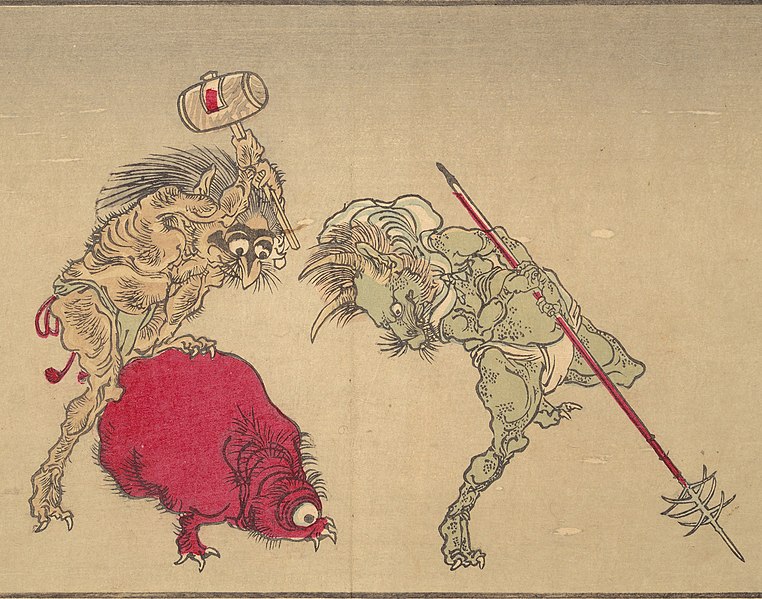
 Who are Yōkai and Kami?
Who are Yōkai and Kami?
Yōkai are a term in Japanese culture that refers to a wide spectrum of supernatural beings – from monsters and ghosts to harmless phantoms and strange phenomena. They often have a capricious nature and unusual abilities, which can be both benevolent and ominous. In contrast, kami are holy beings or spirits that are part of Shinto – Japan's indigenous religion. Kami can reside in elements of nature, objects, or even deceased ancestors, representing life forces and aspects of the spiritual world. The main difference between yōkai and kami is their status and role in Japanese cosmology – yōkai are often considered more terrifying and unpredictable, while kami are revered and viewed as protective spirits.
Beliefs about yōkai and kami have their roots in animism, which sees all elements of the world as animated and possessing spiritual essence. Since ancient times, the Japanese have believed that kami are present in everything, from massive mountains to tiny stones. These beliefs were refined and expanded by Shinto and Buddhism, which contributed to a more organized concept of these beings. Yōkai, although present in the oldest legends and myths, gained popularity during the Edo period (1603-1868) when artists like Toriyama Sekien began cataloging them and featuring them in popular prints.
 The Role of Yōkai and Kami in Japanese Society and Religion
The Role of Yōkai and Kami in Japanese Society and Religion
In traditional Japanese society, kami are deeply respected and venerated in numerous shrines and during festivals and rituals. They are an integral part of daily life and religious practice, serving protective and prosperity-assuring functions. Yōkai, on the other hand, were often treated with caution and respect, as it was believed they could affect human fates in various ways. Stories about yōkai also served educational and cautionary purposes, teaching children and adults about morality, consequences, and the complexity of the natural world. Today, although yōkai are no longer as present in everyday life, they still play an important role in cultural consciousness, remaining a significant element of festivals and regional tales.
 Transformations of Folk Motifs into Contemporary Narratives
Transformations of Folk Motifs into Contemporary Narratives
Japanese folklore plays a crucial role in the creation of manga and anime narratives, transforming traditional motifs into stories accessible to contemporary audiences. For example, the series "Gegege no Kitaro," based on the works of Shigeru Mizuki, brings to life a range of yōkai, placing them in the context of modern Japan. Kitaro, the main character, is a friendly yōkai who battles other, less benevolent spirits. "Natsume's Book of Friends," in turn, tells the story of a boy who can see yōkai and his interactions with them, often based on folklore but presented in a way that captures contemporary moral and emotional dilemmas. The manga and anime "Mononoke" also draw from traditional ghost stories, combining them with psychological horror and detective elements.
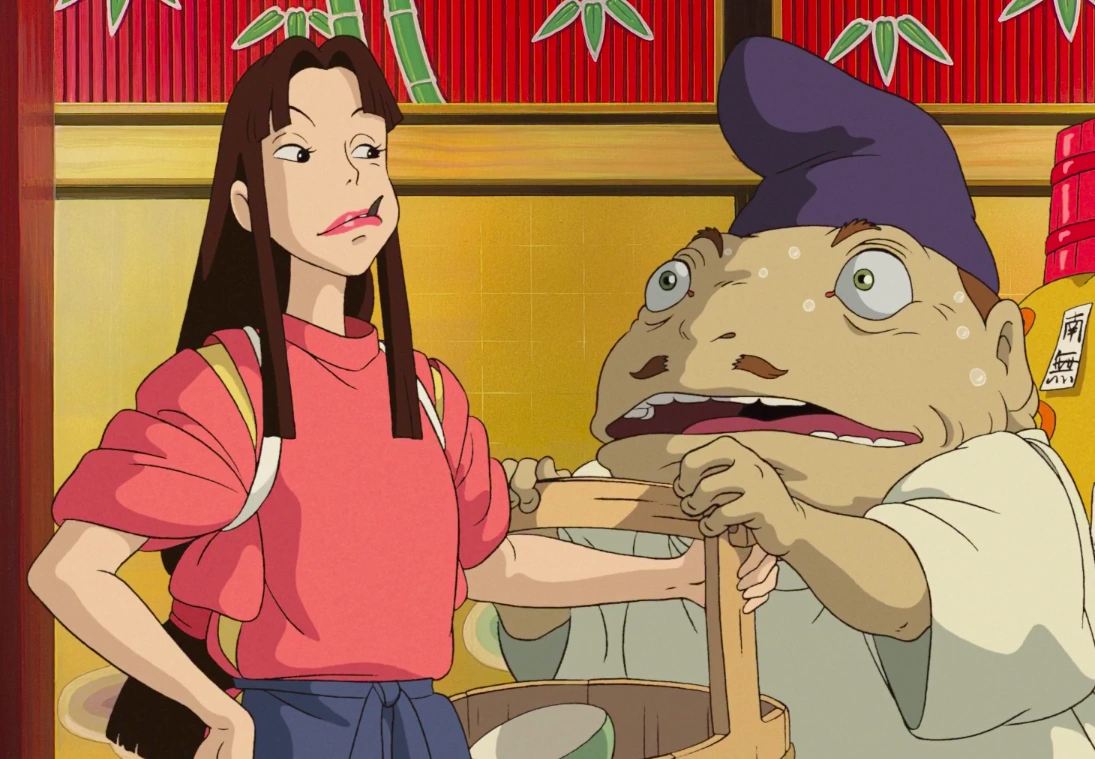
 How Yōkai and Kami Reflect the Japanese Worldview
How Yōkai and Kami Reflect the Japanese Worldview
Yōkai and kami in Japanese culture reflect how Japanese society perceives the world and its mysterious aspects. They show respect for nature and its forces, as well as a belief in a spiritual dimension of life, where every object or phenomenon can have its own spirit or guardian. In anime and manga, these beings often serve as metaphors for natural forces or for human emotions and character traits, such as greed, anger, or kindness. For instance, in "Princess Mononoke," the forest kami symbolize the balance between civilizational development and the preservation of the natural world, thereby adding a deeper ecological dimension to the narrative.
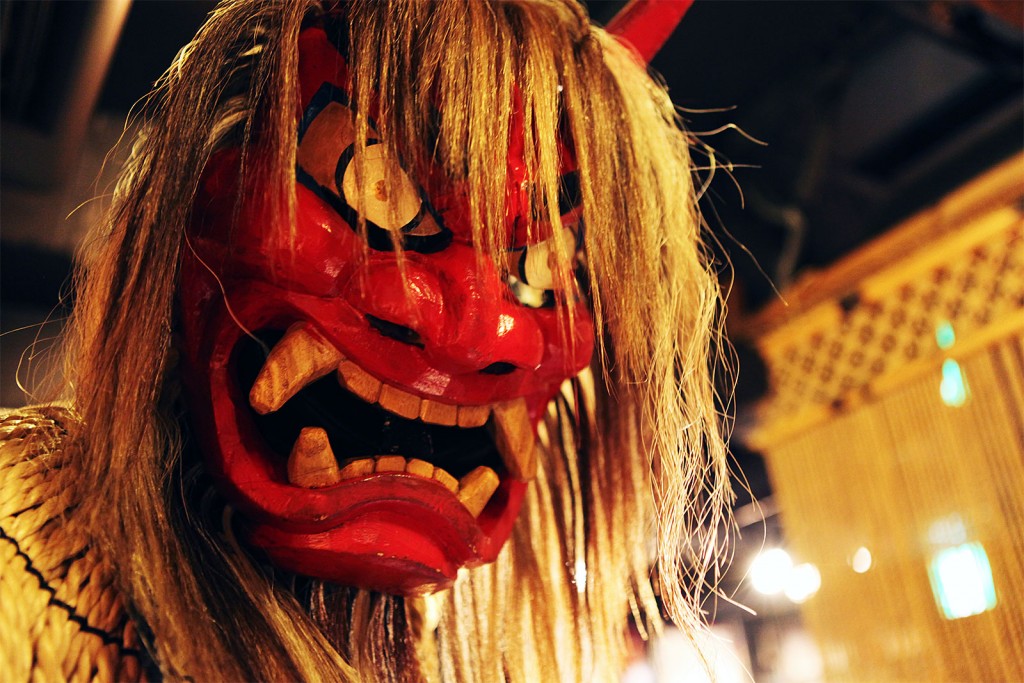
Stories related to yōkai and kami in manga and anime often carry important moral and philosophical lessons. These tales can serve as a warning against the destructive consequences of human behaviors or as a reminder of the need for harmonious coexistence with nature and the world around us. For example, the yōkai in "Mushishi" represent a variety of life's challenges, emphasizing the need to understand and accept things we cannot change and the wisdom that comes from observation and adaptation. Similarly, in "Spirited Away," the transformation of the main character Chihiro from a spoiled child to a responsible and independent person mirrors everyone's journey through life, highlighting the value of hard work, courage, and empathy.
Some of the Yokais:
-
Oni – demons of strength and destruction In Japanese mythology, Oni are powerful demons often associated with strength and destruction. In anime and manga, these creatures often appear as antagonists or obstacles to overcome. An example is the Oni in "Nura: Rise of the Yokai Clan," where these beings play a variety of roles, from sinister enemies to complex characters with a code of honor.
-
Tengu – mysterious bird-people Tengu are depicted as spiritual bird-like beings that are guardians of forests and mountains. They are often ambivalent – they can both assist and hinder humans. "Kamisama Kiss" presents tengu as powerful and influential beings among whom the main character must find his place.
-
Kitsune – clever and magical foxes Kitsune are foxes known for their wisdom and magical powers, including the ability to transform. "Spice and Wolf" features a kitsune in the form of Holo, a wise and cunning harvest deity who takes human form.
-
Kappa – water creatures with humorous and terrifying aspects Kappa are aquatic yōkai that can be dangerous but are also often portrayed in a more humorous way. In "Sarazanmai," kappa play a central role in the narrative, blending elements of folklore with a surrealistic approach to the story.
-
Tanuki – deceptive creatures resembling raccoon dogs Tanuki in legends are known for their transformation abilities and mischief. "Pom Poko" by Studio Ghibli is an animated film that focuses on tanuki trying to defend their home from human expansion.
-
Yuki-onna – the ice woman, spirit of winter Yuki-onna embodies beauty and the lethal danger associated with snow and frost. In "Mushishi," she appears as a mysterious being whose story intertwines with human fates.
-
Nure-onna – the snake woman with terrifying tendencies This sea yōkai is often depicted as a woman with the torso of a snake, heralding misfortune. In the anime "Mononoke," she appears as one of the mysterious beings the protagonist must confront.
-
Jorōgumo – the spider-woman, seductress, and predator Jorōgumo combines the features of a beautiful woman and a deadly spider. "Ayakashi: Samurai Horror Tales" is a series that portrays this creature as a cunning and dangerous antagonist.
-
Rokurokubi
– beings with stretchable necks Rokurokubi are yōkai that look like ordinary people by day, but at night their necks stretch and they go out in search of humans or blood. They appear in various anime, including "GeGeGe no Kitaro," often providing sources of terror and humor.
-
Bakeneko – cat spirits, from tricksters to vengeful ghosts Bakeneko are cat-shaped yōkai that can change their size, use magic, and transform into humans. These cunning creatures are often portrayed as playful but can become dangerous if mistreated or seeking revenge. In Japanese culture, bakeneko can be protective or malevolent, and their history goes far back.
-
Ame-onna – rain women who feed on sorrow Ame-onna are rain spirits, often depicted as characters causing rain and associated with sad events. In anime, such characters often play symbolic roles, like in "The Garden of Words," where the constant rain mirrors the characters' emotions.
-
Tsuchigumo and Jorōgumo – mythical spiders Tsuchigumo (earth spiders) are mythical yōkai depicted as giant spiders capable of creating illusions and manipulating humans. Jorōgumo, already mentioned, are a variety of these creatures. Both varieties appear in many anime, including "Naruto," where one character uses spider-based techniques.
-
Nurarihyon – the spirit that sneaks into homes unnoticed Nurarihyon is portrayed as a yōkai that looks like a harmless old man but has the ability to sneak into homes and behave as if he is the owner. He is the main character in "Nura: Rise of the Yokai Clan," where he leads night parades of yōkai.
-
Zashiki-warashi – childlike spirits bringing fortune or misfortune Zashiki-warashi are spirits that take the form of children and are said to inhabit houses. Their presence can bring wealth and fortune to the household, but neglecting them can lead to misfortune. These characters appear in various stories, such as "xxxHolic," where interactions with such beings are often a main theme.
-
Enenra – smoke and mist spirits Enenra are yōkai made of smoke or mist, often associated with mystery and illusion. In the anime "JoJo's Bizarre Adventure," a character has the ability to transform into smoke, which may be an interpretation or inspiration from the legend of enenra.
-
Yōkai populate many of anime's fantastical worlds. The list above is just a few examples from the rich library of fantastical creatures featured in anime.
-
Oni – "Nura: Rise of the Yokai Clan" (Nurarihyon no Mago): In this anime, Oni appear as powerful demons, often posing a challenge to the main characters who themselves are part yōkai.
-
Tengu – "Kamisama Kiss" (Kamisama Hajimemashita): A character named Kurama is a tengu who takes on human form. The anime explores his supernatural powers and connections with traditional beliefs about tengu.
-
Kitsune – "Spice and Wolf" (Ōkami to Kōshinryō): The main character, Holo, is a harvest deity in the form of a kitsune, who uses her wisdom and magical abilities to assist in travel and trade.
-
Tanuki – "The Eccentric Family" (Uchōten Kazoku): This series follows the misadventures of a tanuki family living among humans in modern Kyoto, depicting their lives filled with magic and transformation.
-
Nekomata – "Natsume's Book of Friends" (Natsume Yūjin-chō): Many episodes of this series feature interactions with nekomata, which play various roles from guides to antagonists.
-
Kappa – "Sarazanmai": In this unusual and symbolic series, the main characters transform into kappa, engaging in battles with other yōkai and solving puzzles.
-
Yuki-onna – "Rosario + Vampire": Mizore Shirayuki, one of the characters, is modeled after the Yuki-onna, possessing powers to control elements associated with cold and snow.
-
Inugami – "InuYasha": This iconic series features various yōkai, with InuYasha himself being a half-demon with origins tied to dog yōkai, a reference to inugami.
-
Rokurokubi – "Mononoke": This series is characterized by its unique aesthetic and the depiction of various yōkai, including a rokurokubi woman whose mysterious nature is crucial to the plot of one of the episodes.
-
Bakeneko – "GeGeGe no Kitarō": In this series, which is a treasury of yōkai tales, bakeneko appear as mischievous or vengeful spirits, showcasing the diversity of their representations in Japanese folklore.
Summary
Yōkai and kami, as integral elements of Japanese mythology, provide a vivid canvas for manga and anime creators, who successfully adapt these figures into modern visual art. The stylization of these beings in animation and manga often includes traditional imagery while adding a unique, contemporary dimension. As a result, yōkai and kami are transformed into characters with widely recognizable features, such as the multi-tailed kitsune or the horned oni, which give them a special visual aesthetic. The variety of aesthetics in anime allows for the creation of both picturesque, ethereal deities and more grotesque or terrifying monsters.
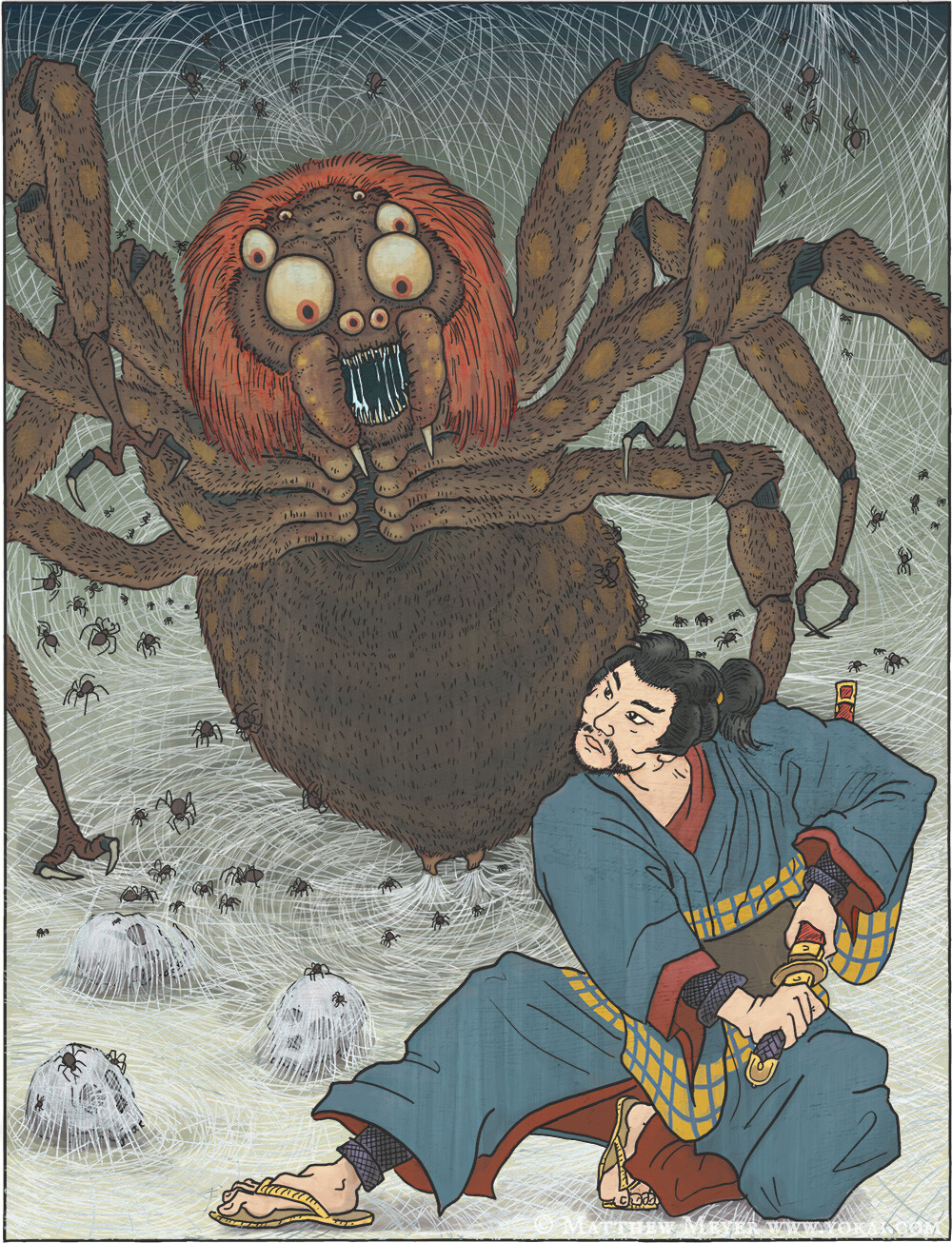
The variety of genres and forms in which yōkai and kami appear speaks to the limitless possibilities for their use in anime. Horror, comedy, romance, and even drama – each of these genres can be enriched with mythological elements, enhancing the narrative and adding depth. Yōkai stories can evoke fear, as in the series "Mononoke," where grotesque visualization and dark narration immerse the viewer in a state of unease, but they can also amuse, as in "GeGeGe no Kitarō," where yōkai often find themselves in humorous and absurd situations.
In conclusion, yōkai and kami are not merely relics of the past but a living inspiration for contemporary visual and narrative art in Japan. Their presence in manga and anime is proof that ancient beliefs and legends can still find expression in new forms and stories, bridging the past with the future.
"Strong Japanese Women"
see book by the author
of the page
未開 ソビエライ
An enthusiast of Asian culture with a deep appreciation for the diverse philosophies of the world. By education, a psychologist and philologist specializing in Korean studies. At heart, a programmer (primarily for Android) and a passionate technology enthusiast, as well as a practitioner of Zen and mono no aware. In moments of tranquility, adheres to a disciplined lifestyle, firmly believing that perseverance, continuous personal growth, and dedication to one's passions are the wisest paths in life. Author of the book "Strong Women of Japan" (>>see more)
Personal motto:
"The most powerful force in the universe is compound interest." - Albert Einstein (probably)
Mike Soray
(aka Michał Sobieraj)
未開 ソビエライ
An enthusiast of Asian culture with a deep appreciation for the diverse philosophies of the world. By education, a psychologist and philologist specializing in Korean studies. At heart, a programmer (primarily for Android) and a passionate technology enthusiast, as well as a practitioner of Zen and mono no aware. In moments of tranquility, adheres to a disciplined lifestyle, firmly believing that perseverance, continuous personal growth, and dedication to one's passions are the wisest paths in life. Author of the book "Strong Women of Japan" (>>see more)
Personal motto:
"The most powerful force in the universe is compound interest." - Albert Einstein (probably)
Mike Soray
(aka Michał Sobieraj)
Write us...
Ciechanów, Polska
dr.imyon@gmail.com
___________________
inari.smart
Would you like to share your thoughts or feedback about our website or app? Leave us a message, and we’ll get back to you quickly. We value your perspective!
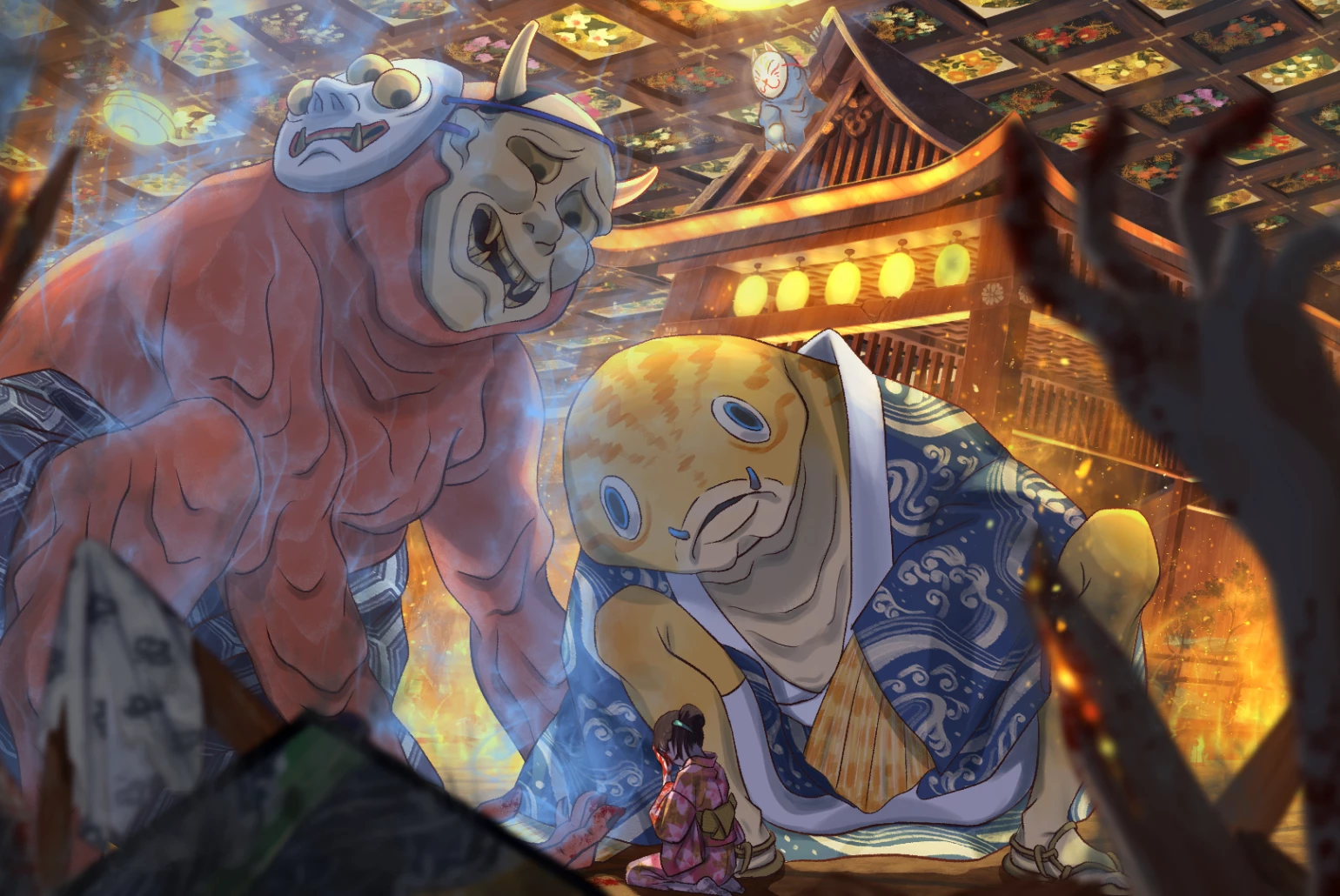 From the Shadows: Yōkai and Kami in the New Era
From the Shadows: Yōkai and Kami in the New Era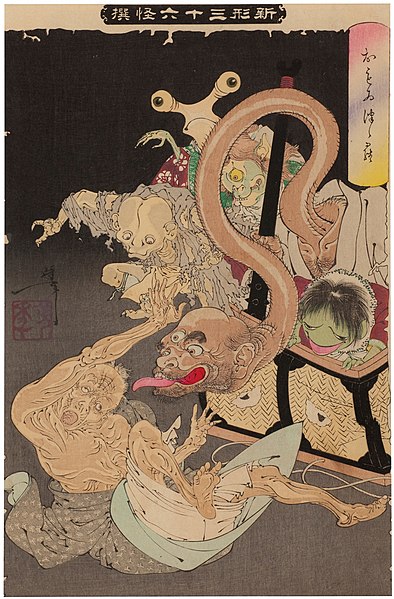 Who are Yōkai and Kami?
Who are Yōkai and Kami?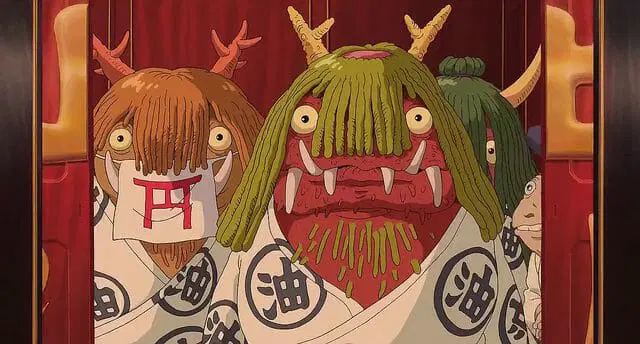 The Role of Yōkai and Kami in Japanese Society and Religion
The Role of Yōkai and Kami in Japanese Society and Religion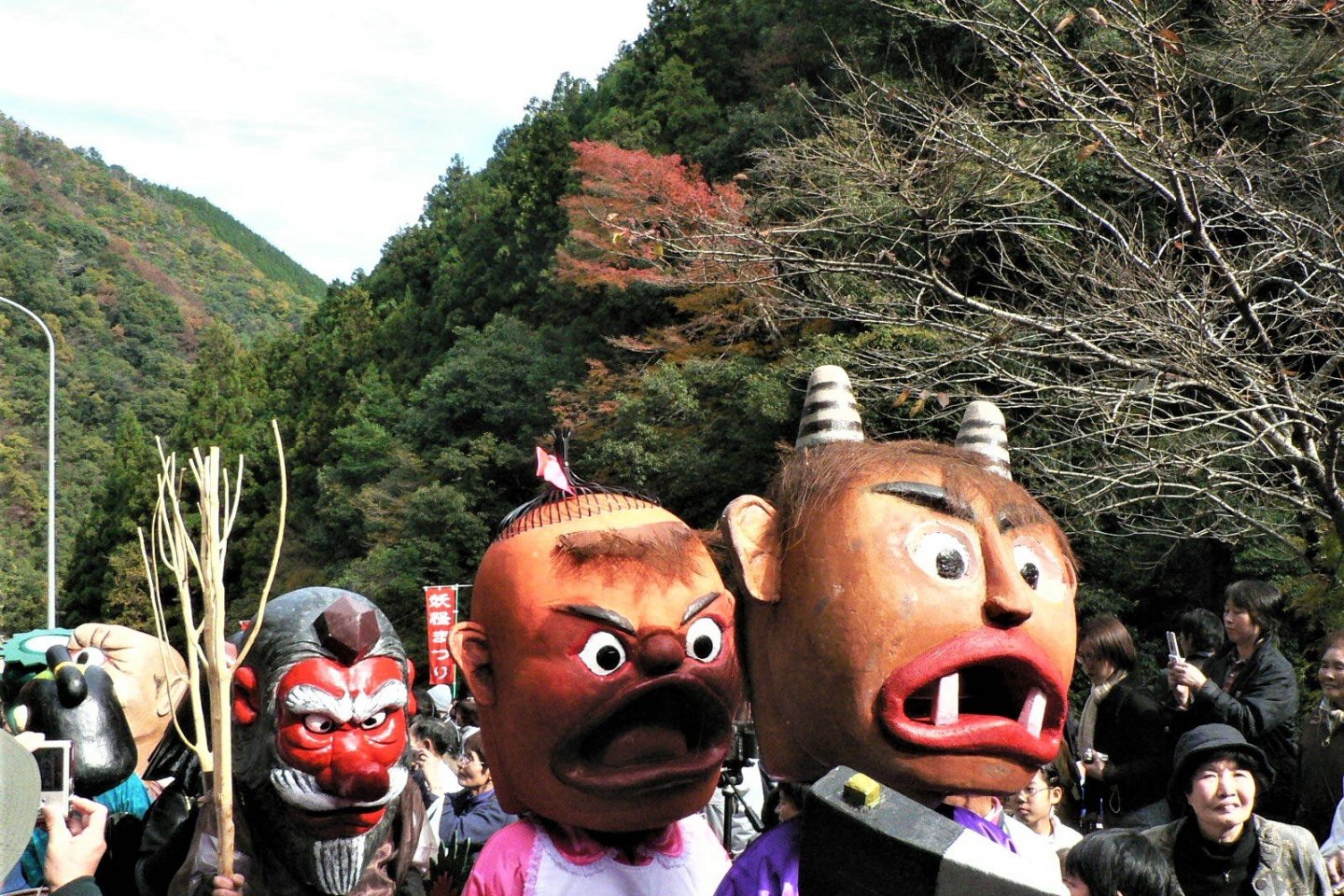 Transformations of Folk Motifs into Contemporary Narratives
Transformations of Folk Motifs into Contemporary Narratives 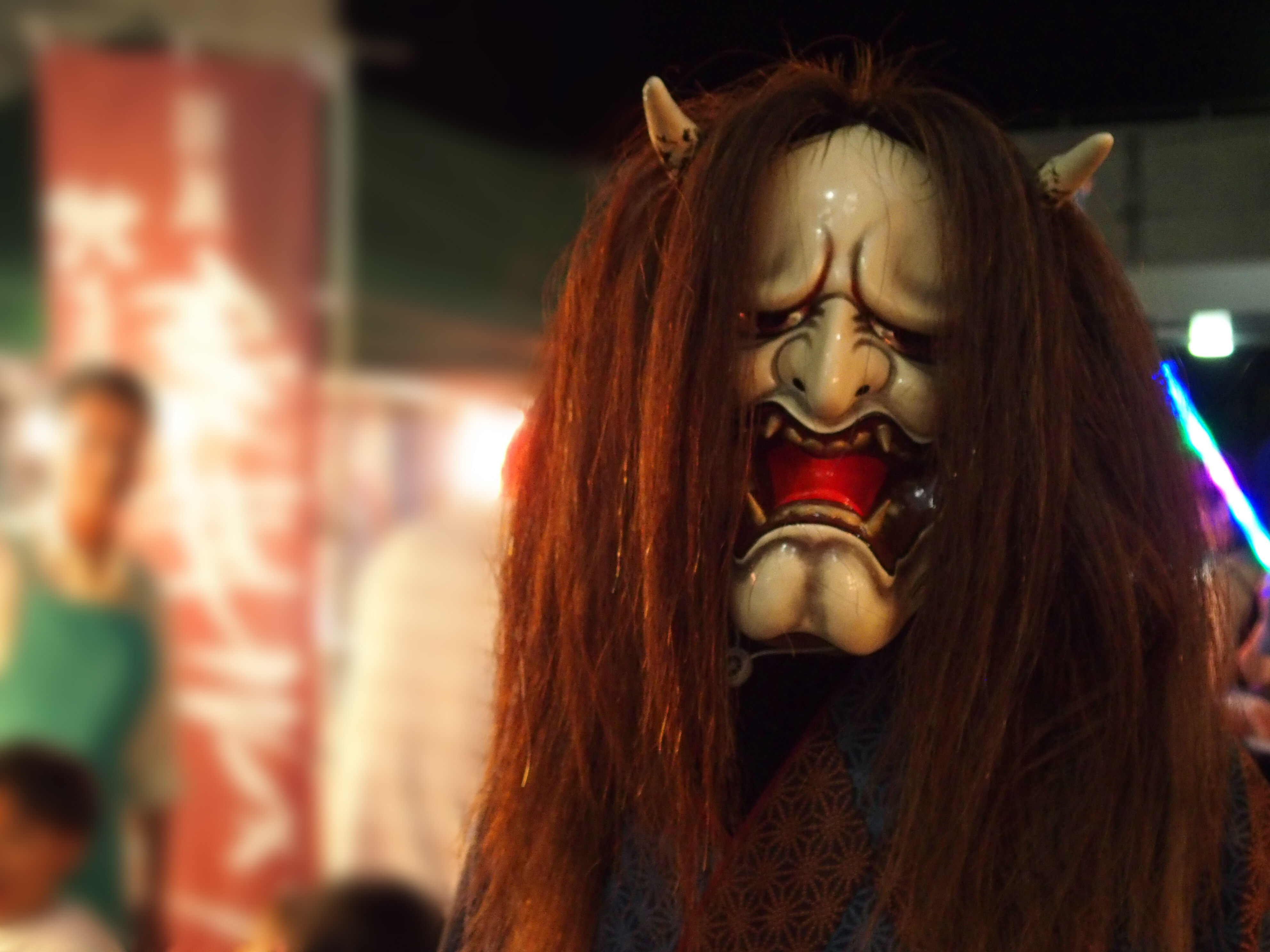 How Yōkai and Kami Reflect the Japanese Worldview
How Yōkai and Kami Reflect the Japanese Worldview 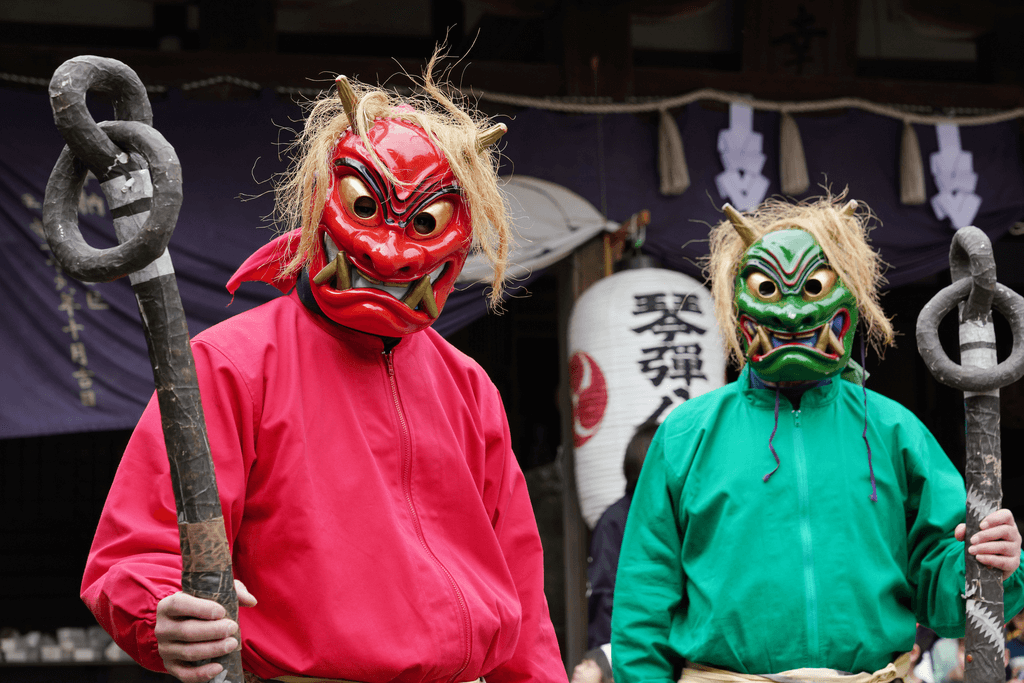 Oni – demons of strength and destruction In Japanese mythology, Oni are powerful demons often associated with strength and destruction. In anime and manga, these creatures often appear as antagonists or obstacles to overcome. An example is the Oni in "Nura: Rise of the Yokai Clan," where these beings play a variety of roles, from sinister enemies to complex characters with a code of honor.
Oni – demons of strength and destruction In Japanese mythology, Oni are powerful demons often associated with strength and destruction. In anime and manga, these creatures often appear as antagonists or obstacles to overcome. An example is the Oni in "Nura: Rise of the Yokai Clan," where these beings play a variety of roles, from sinister enemies to complex characters with a code of honor.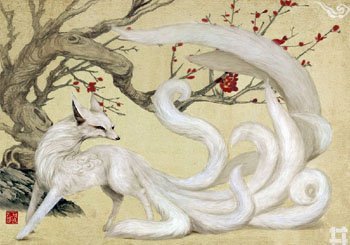 Kitsune – clever and magical foxes Kitsune are foxes known for their wisdom and magical powers, including the ability to transform. "Spice and Wolf" features a kitsune in the form of Holo, a wise and cunning harvest deity who takes human form.
Kitsune – clever and magical foxes Kitsune are foxes known for their wisdom and magical powers, including the ability to transform. "Spice and Wolf" features a kitsune in the form of Holo, a wise and cunning harvest deity who takes human form.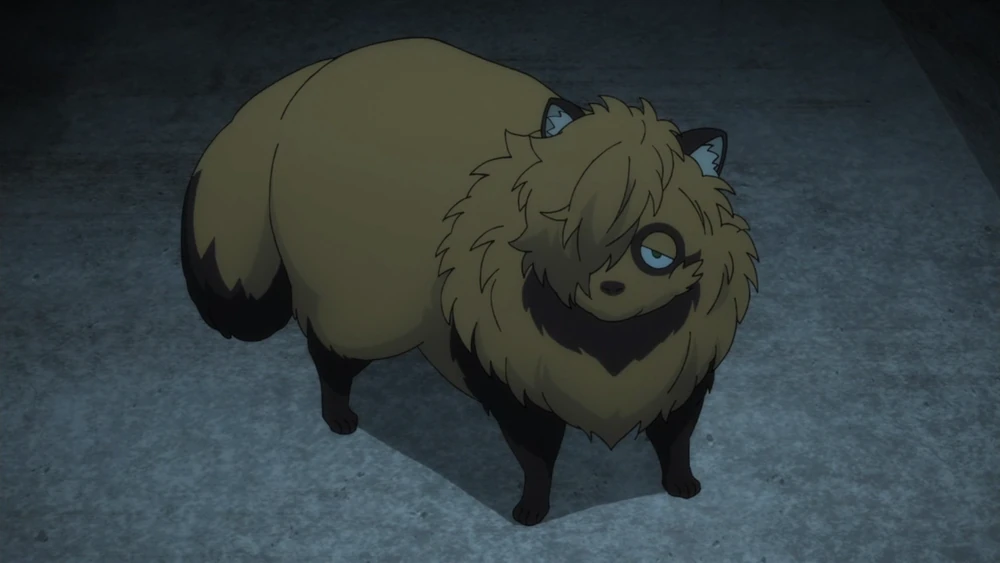 Tanuki – deceptive creatures resembling raccoon dogs Tanuki in legends are known for their transformation abilities and mischief. "Pom Poko" by Studio Ghibli is an animated film that focuses on tanuki trying to defend their home from human expansion.
Tanuki – deceptive creatures resembling raccoon dogs Tanuki in legends are known for their transformation abilities and mischief. "Pom Poko" by Studio Ghibli is an animated film that focuses on tanuki trying to defend their home from human expansion.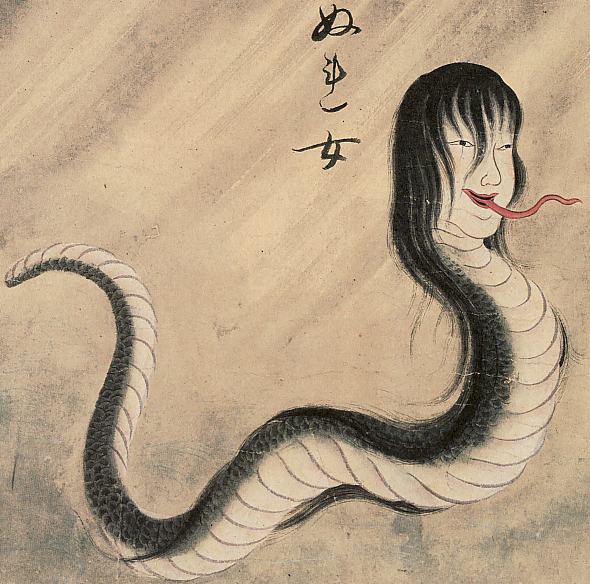 Nure-onna – the snake woman with terrifying tendencies This sea yōkai is often depicted as a woman with the torso of a snake, heralding misfortune. In the anime "Mononoke," she appears as one of the mysterious beings the protagonist must confront.
Nure-onna – the snake woman with terrifying tendencies This sea yōkai is often depicted as a woman with the torso of a snake, heralding misfortune. In the anime "Mononoke," she appears as one of the mysterious beings the protagonist must confront.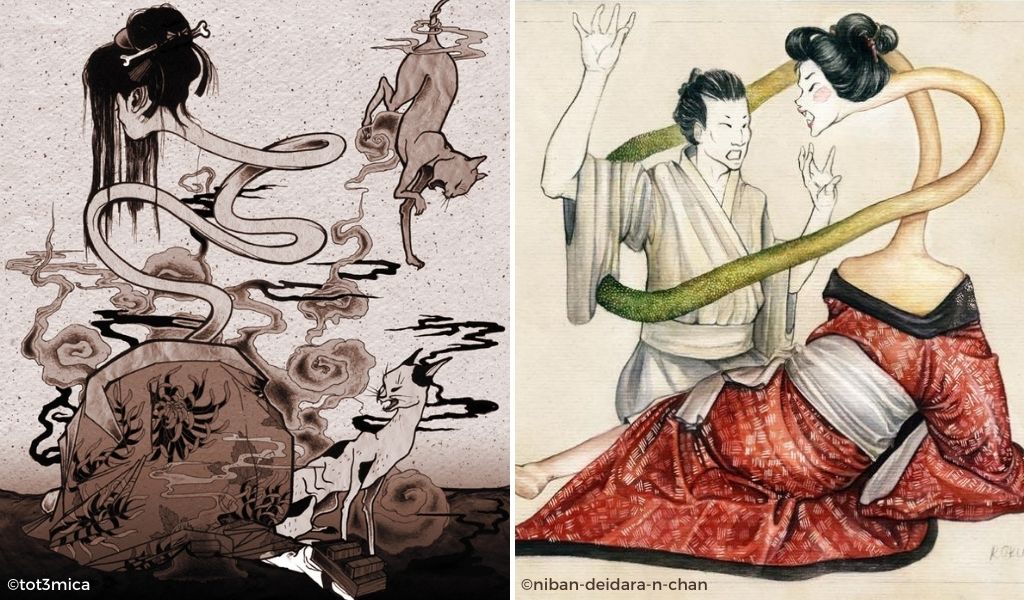 – beings with stretchable necks Rokurokubi are yōkai that look like ordinary people by day, but at night their necks stretch and they go out in search of humans or blood. They appear in various anime, including "GeGeGe no Kitaro," often providing sources of terror and humor.
– beings with stretchable necks Rokurokubi are yōkai that look like ordinary people by day, but at night their necks stretch and they go out in search of humans or blood. They appear in various anime, including "GeGeGe no Kitaro," often providing sources of terror and humor. Ame-onna – rain women who feed on sorrow Ame-onna are rain spirits, often depicted as characters causing rain and associated with sad events. In anime, such characters often play symbolic roles, like in "The Garden of Words," where the constant rain mirrors the characters' emotions.
Ame-onna – rain women who feed on sorrow Ame-onna are rain spirits, often depicted as characters causing rain and associated with sad events. In anime, such characters often play symbolic roles, like in "The Garden of Words," where the constant rain mirrors the characters' emotions. Zashiki-warashi – childlike spirits bringing fortune or misfortune Zashiki-warashi are spirits that take the form of children and are said to inhabit houses. Their presence can bring wealth and fortune to the household, but neglecting them can lead to misfortune. These characters appear in various stories, such as "xxxHolic," where interactions with such beings are often a main theme.
Zashiki-warashi – childlike spirits bringing fortune or misfortune Zashiki-warashi are spirits that take the form of children and are said to inhabit houses. Their presence can bring wealth and fortune to the household, but neglecting them can lead to misfortune. These characters appear in various stories, such as "xxxHolic," where interactions with such beings are often a main theme. Tengu – "Kamisama Kiss" (Kamisama Hajimemashita): A character named Kurama is a tengu who takes on human form. The anime explores his supernatural powers and connections with traditional beliefs about tengu.
Tengu – "Kamisama Kiss" (Kamisama Hajimemashita): A character named Kurama is a tengu who takes on human form. The anime explores his supernatural powers and connections with traditional beliefs about tengu. Nekomata – "Natsume's Book of Friends" (Natsume Yūjin-chō): Many episodes of this series feature interactions with nekomata, which play various roles from guides to antagonists.
Nekomata – "Natsume's Book of Friends" (Natsume Yūjin-chō): Many episodes of this series feature interactions with nekomata, which play various roles from guides to antagonists. Bakeneko – "GeGeGe no Kitarō": In this series, which is a treasury of yōkai tales, bakeneko appear as mischievous or vengeful spirits, showcasing the diversity of their representations in Japanese folklore.
Bakeneko – "GeGeGe no Kitarō": In this series, which is a treasury of yōkai tales, bakeneko appear as mischievous or vengeful spirits, showcasing the diversity of their representations in Japanese folklore.

